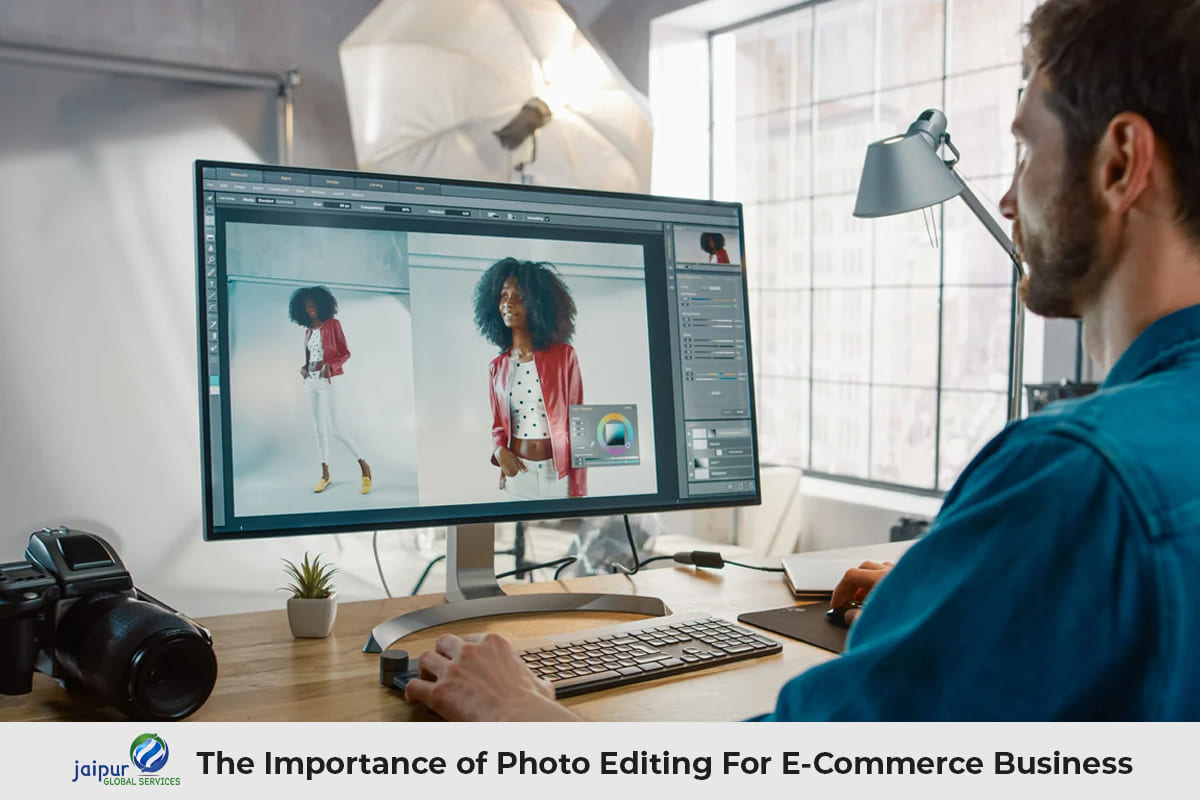
In the world of e-commerce, where customers cannot physically touch and feel products before buying, the visual appeal of product images plays a vital role in making a purchase decision. In fact, studies have shown that high-quality product images can increase conversion rates and boost sales. This is the point where photo editing becomes important. Photo editing is the process of enhancing, retouching, and manipulating images to improve their visual appeal. In this article, we will discuss the importance of photo editing for e-commerce businesses and how it can benefit them.
The benefits of photo editing for e-commerce businesses
1. Enhances the visual appeal of product images: Photo editing can help enhance the visual appeal of product images by improving their brightness, contrast, saturation, and sharpness. This can make the products look more attractive and appealing to potential customers, which can increase the likelihood of making a sale.
2. Helps to showcase products in the best possible light: With photo editing, e-commerce businesses can showcase their products in the best possible light. For example, they can use image editing techniques to highlight the unique features and benefits of their products and create a compelling visual story that resonates with customers.
3. Increases customer engagement and retention: High-quality product images created through photo editing can increase customer engagement and retention. This is because customers are more likely to be attracted to and stay on websites that have visually appealing images.
4. Helps to build trust and credibility with customers: When e-commerce businesses invest in high-quality product images created through photo editing, they can build trust and credibility with their customers. This is because customers are more likely to trust businesses that have professional-looking images that accurately represent their products.
5. Helps to improve search engine optimization (SEO) and increase visibility: Photo editing can also help improve SEO and increase visibility. By optimizing product images with relevant keywords, businesses can improve their rankings on search engine results pages (SERPs) and increase their visibility to potential customers.
6. Facilitates A/B testing and optimization: Photo editing can facilitate A/B testing and optimization. By creating multiple versions of product images and testing them with customers, e-commerce businesses can identify which images perform best and make data
Techniques used in photo editing for e-commerce
1. Background removal: One of the most common techniques used in photo editing for e-commerce is background removal. This involves removing the background from an image to create a clean, white background that puts the focus on the product. This technique is particularly useful for e-commerce businesses that want to showcase their products in a consistent and professional manner.
2. Color correction: Another important technique used in photo editing for e-commerce is color correction. This involves adjusting the colors in an image to make them more accurate and visually appealing. Color correction can be used to make products appear more vibrant and to ensure that they are represented accurately.
3. Image resizing and cropping: Image resizing and cropping are also important techniques used in photo editing for e-commerce. These techniques can be used to ensure that product images are the correct size and aspect ratio for display on different devices and platforms.
4. Image retouching: Image retouching is another technique used in photo editing for e-commerce. This involves removing imperfections from product images, such as dust, scratches, or blemishes, to create a polished and professional-looking image.
5. Adding/removing objects and text: Adding or removing objects and text is another technique used in photo editing for e-commerce. This can be used to add branding or messaging to product images or to remove distracting elements that take the focus away from the product.
Best practices for photo editing in e-commerce
1. Consistency in image style and quality: It is important for e-commerce businesses to maintain consistency in image style and quality across all of their product images. This can help create a cohesive and professional-looking visual brand identity that resonates with customers.
2. Understanding the target audience and tailoring images accordingly: E-commerce businesses should also consider their target audience when editing product images. For example, if the target audience is young and trendy, images should be edited to reflect this aesthetic.
3. Keeping file sizes small for fast loading times: It is important to keep file sizes small when editing product images for e-commerce. This can help ensure fast loading times and prevent customers from becoming frustrated with slow-loading pages.
4. Using high-resolution images for zoom and product detail: E-commerce businesses should also use high-resolution images for product zoom and detail. This can help customers get a better sense of the product and make informed purchase decisions.
5. Avoiding over: It is important to avoid over-editing product images in e-commerce. While editing can enhance the appearance of images, over-editing can lead to unrealistic representations of products that can damage customer trust and credibility.
Conclusion
In conclusion, photo editing is an essential aspect of e-commerce businesses that can significantly impact their success. High-quality product images can increase sales and conversions, improve brand image and credibility, reduce return rates, and improve search engine optimization. By utilizing photo editing techniques and following best practices, e-commerce businesses can create visually appealing and professional-looking product images that resonate with their customers and drive sales. Investing in photo editing is a smart and necessary decision for any e-commerce business looking to succeed in today’s competitive digital market.
